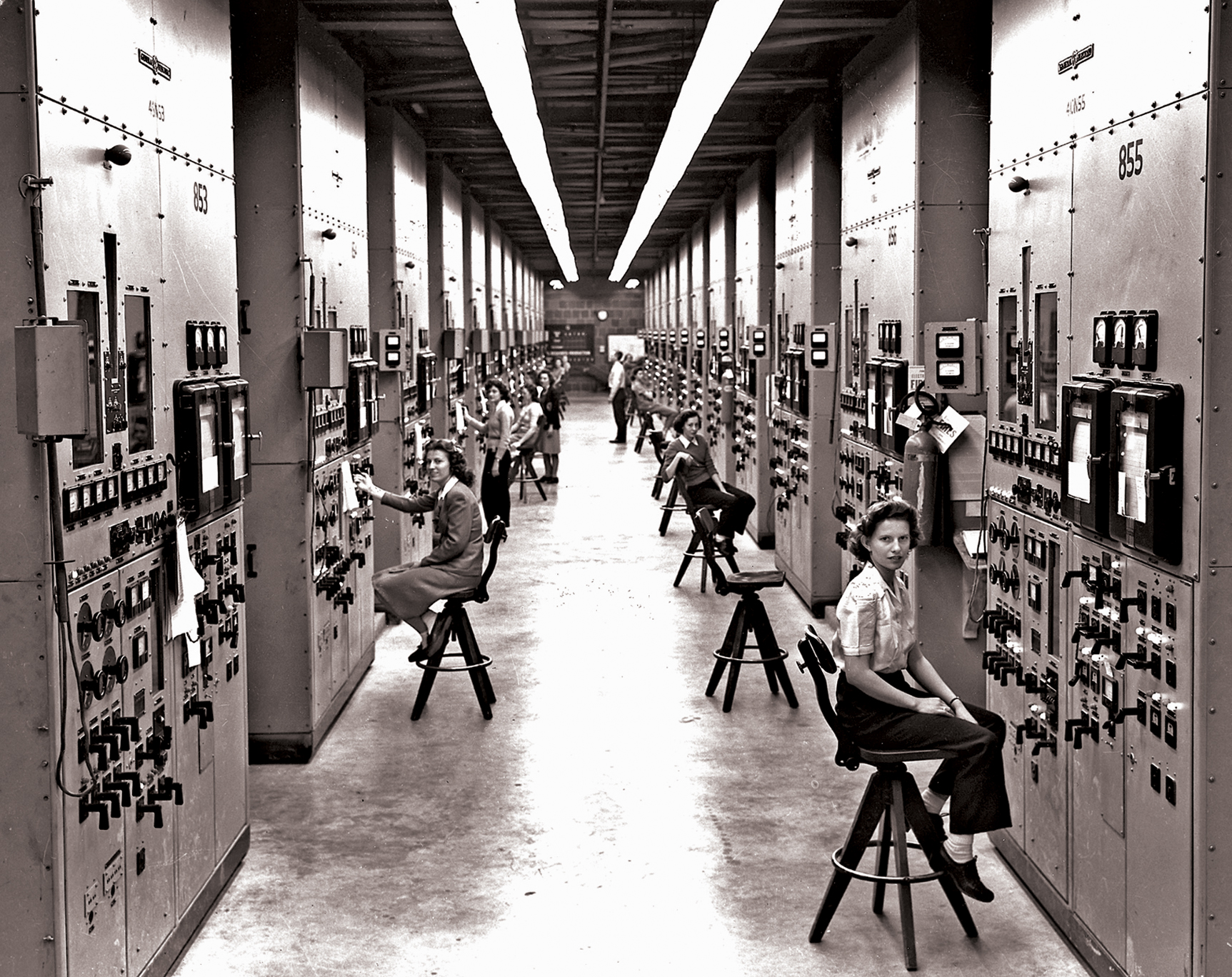On February 18, 1943, construction began on the first building (9201-1) at the Y-12 Electromagnetic Separation Plant in Oak Ridge, TN. Y-12’s primary wartime purpose was to separate uranium 235 from uranium 238 for use in the world’s first atomic weapons. At the plant’s peak of operations in 1945, more than 22,000 workers including the famous Calutron Girls undertook this top-secret mission. On August 6, 1945, the US military dropped the Little Boy atomic bomb on Hiroshima, Japan, fueled by enriched uranium separated at Y-12.
Y-12’s nuclear research and development continued through the Cold War through the present day, where the complex remains a highly-secured facility operated for the US Department of Energy. https://www.nps.gov/mapr/index.htm
Calutron Girls
The story of the Calutron Girls is a remarkable chapter in the history of the Manhattan Project, offering a glimpse into the pivotal role played by young women in one of the most secretive and groundbreaking scientific endeavors of World War II.
Recruited mostly from high schools, these young women embarked on a journey that would take them to the heart of the war effort, to the Y-12 National Security Complex located at Oak Ridge, Tennessee. Tasked with operating calutrons, a type of mass spectrometer used to separate isotopes of uranium for the production of enriched uranium, these women became an indispensable part of the project.
Their work was shrouded in secrecy, with many of them unaware of the true nature of their tasks or the significance of the project they were contributing to. Working long hours in challenging conditions, they displayed remarkable dedication and resilience, often under the pressure of strict security protocols and the weight of the knowledge that their work could potentially alter the course of the war.
Despite the demanding nature of their roles, the Calutron Girls approached their duties with a sense of duty and patriotism, driven by a collective desire to support the war effort and bring an end to the conflict. Their contributions were instrumental in the success of the Manhattan Project, playing a crucial role in the development of the atomic bomb and ultimately helping to bring about the end of World War II.
After the war, many of these women returned to their civilian lives, their contributions largely overlooked and overshadowed by the secrecy surrounding the project. However, their legacy endures as a testament to the often unsung heroines of wartime science and the vital role played by women in advancing scientific discovery and innovation.

See Also
